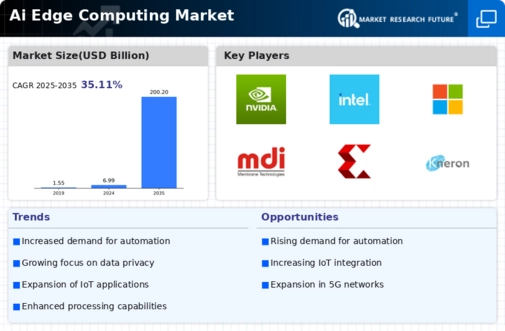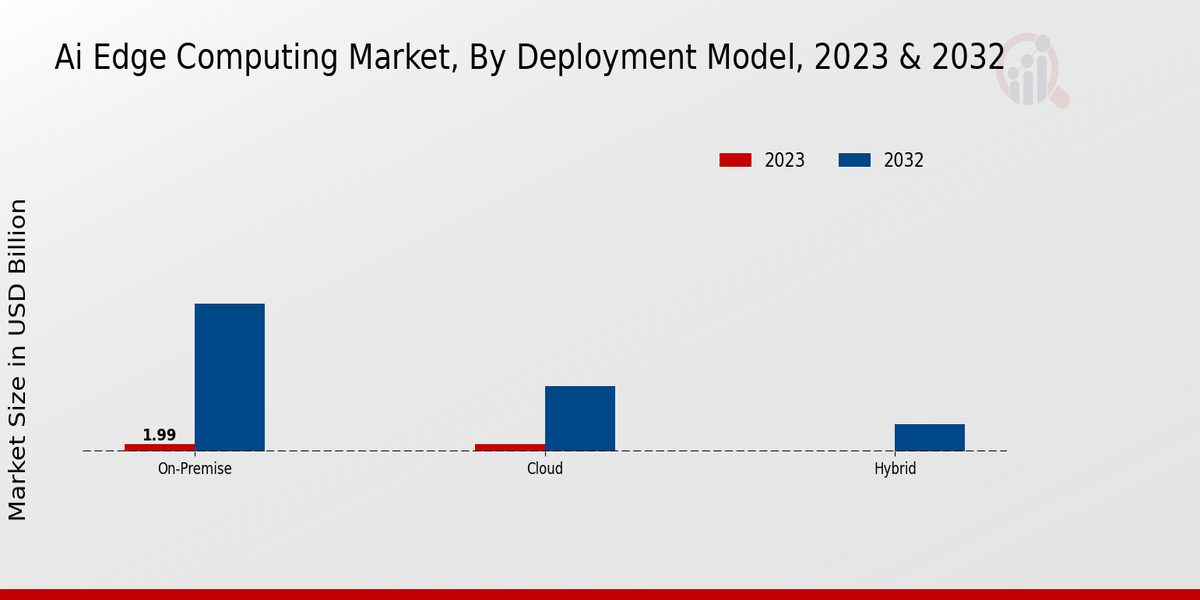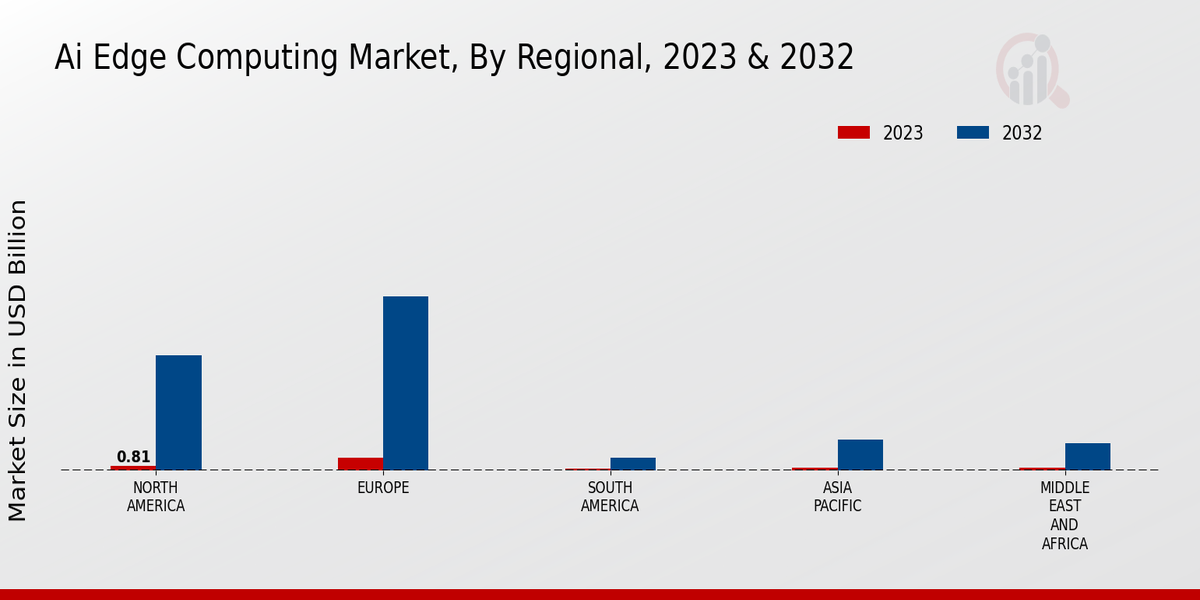-
'TABLE OF CONTENTS
-
EXECUTIVE SUMMARY
-
Market Overview
-
Key Findings
-
Market Segmentation
-
Competitive Landscape
-
Challenges and Opportunities
-
Future Outlook
-
MARKET INTRODUCTION
-
Definition
-
Scope of the study
- Research Objective
- Assumption
- Limitations
-
RESEARCH METHODOLOGY
-
Overview
-
Data Mining
-
Secondary Research
-
Primary Research
- Primary Interviews and Information Gathering
-
Process
-
Breakdown of Primary Respondents
-
Forecasting Model
-
Market Size Estimation
- Bottom-Up Approach
- Top-Down Approach
-
Data Triangulation
-
Validation
-
MARKET DYNAMICS
-
Overview
-
Drivers
-
Restraints
-
Opportunities
-
MARKET FACTOR ANALYSIS
-
Value
-
chain Analysis
-
Porter''s Five Forces Analysis
-
Bargaining Power of Suppliers
- Bargaining Power of Buyers
- Threat of New Entrants
- Threat
-
of Substitutes
-
Intensity of Rivalry
-
COVID-19 Impact Analysis
-
Market Impact Analysis
- Regional Impact
- Opportunity and Threat Analysis
-
AI EDGE COMPUTING MARKET, BY DEPLOYMENT MODEL (USD BILLION)
-
On-Premise
-
Cloud
-
Hybrid
-
AI EDGE COMPUTING MARKET, BY APPLICATION (USD
-
BILLION)
-
Predictive Maintenance
-
Process Optimization
-
Quality Control
-
Safety and Security
-
Others
-
AI EDGE COMPUTING MARKET, BY END USER INDUSTRY
-
(USD BILLION)
-
Manufacturing
-
Healthcare
-
Retail
-
Transportation and Logistics
-
Energy and Utilities
-
AI EDGE COMPUTING MARKET, BY REGIONAL (USD BILLION)
-
North America
- US
- Canada
-
Europe
- Germany
- UK
- France
- Russia
- Italy
- Spain
- Rest of Europe
-
APAC
- China
- India
- Japan
- South
-
Korea
-
Malaysia
-
Thailand
-
Indonesia
-
Rest of APAC
-
South America
-
Brazil
-
Mexico
-
Argentina
-
Rest of South America
-
MEA
-
GCC Countries
-
South Africa
-
Rest of MEA
-
COMPETITIVE LANDSCAPE
-
Overview
-
Competitive Analysis
-
Market share Analysis
-
Major Growth Strategy in the Ai Edge Computing
-
Market
-
Competitive Benchmarking
-
Leading Players in Terms of Number of Developments in the Ai
-
Edge Computing Market
-
Key developments and growth strategies
-
New Product Launch/Service Deployment
- Merger &
-
Acquisitions
-
Joint Ventures
-
Major Players Financial Matrix
-
Sales and Operating Income
- Major Players R&D Expenditure. 2023
-
COMPANY PROFILES
-
Texas
-
Instruments Incorporated
-
Financial Overview
- Products Offered
- Key Developments
- SWOT Analysis
- Key Strategies
-
IBM Corporation
- Financial Overview
- Products Offered
- Key Developments
- SWOT Analysis
- Key Strategies
-
Qualcomm Technologies, Inc.
- Financial Overview
- Products Offered
- Key
-
Developments
-
SWOT Analysis
-
Key Strategies
-
Amazon Web Services, Inc.
-
Financial Overview
- Products Offered
- Key Developments
- SWOT Analysis
- Key Strategies
-
Renesas Electronics Corporation
- Financial Overview
- Products
-
Offered
-
Key Developments
-
SWOT Analysis
-
Key Strategies
-
Intel Corporation
-
Financial Overview
-
Products Offered
-
Key Developments
-
SWOT Analysis
-
Key Strategies
-
Huawei Technologies Co., Ltd.
-
Financial Overview
- Products Offered
- Key Developments
- SWOT Analysis
- Key Strategies
-
Microsoft Corporation
- Financial Overview
- Products Offered
- Key Developments
- SWOT Analysis
- Key Strategies
-
Samsung Electronics Co., Ltd.
- Financial Overview
- Products Offered
- Key
-
Developments
-
SWOT Analysis
-
Key Strategies
-
Advanced Micro Devices, Inc.
-
Financial Overview
- Products Offered
- Key Developments
- SWOT Analysis
- Key Strategies
-
Cypress Semiconductor Corporation
- Financial Overview
- Products
-
Offered
-
Key Developments
-
SWOT Analysis
-
Key Strategies
-
Google LLC
-
Financial Overview
-
Products Offered
-
Key Developments
-
SWOT Analysis
-
Key Strategies
-
NVIDIA Corporation
-
Financial Overview
-
Products Offered
-
Key Developments
-
SWOT Analysis
-
Key Strategies
-
Xilinx, Inc.
-
Financial Overview
-
Products Offered
-
Key Developments
-
SWOT Analysis
-
Key Strategies
-
AMD, Inc.
-
Financial Overview
-
Products Offered
-
Key Developments
-
SWOT Analysis
-
Key Strategies
-
References
-
Related Reports
-
LIST
-
OF TABLES
-
LIST OF ASSUMPTIONS
-
FORECAST, BY DEPLOYMENT MODEL, 2019-2032 (USD BILLIONS)
-
ESTIMATES & FORECAST, BY APPLICATION, 2019-2032 (USD BILLIONS)
-
COMPUTING MARKET SIZE ESTIMATES & FORECAST, BY END USER INDUSTRY, 2019-2032
-
(USD BILLIONS)
-
NORTH AMERICA AI EDGE COMPUTING MARKET SIZE ESTIMATES & FORECAST, BY REGIONAL,
-
2032 (USD BILLIONS)
-
BY DEPLOYMENT MODEL, 2019-2032 (USD BILLIONS)
-
& FORECAST, BY APPLICATION, 2019-2032 (USD BILLIONS)
-
& FORECAST, BY END USER INDUSTRY, 2019-2032 (USD BILLIONS)
-
MARKET SIZE ESTIMATES & FORECAST, BY REGIONAL, 2019-2032 (USD BILLIONS)
-
COMPUTING MARKET SIZE ESTIMATES & FORECAST, BY DEPLOYMENT MODEL, 2019-2032 (USD
-
BILLIONS)
-
CANADA AI EDGE COMPUTING MARKET SIZE ESTIMATES & FORECAST, BY APPLICATION,
-
2032 (USD BILLIONS)
-
BY END USER INDUSTRY, 2019-2032 (USD BILLIONS)
-
& FORECAST, BY REGIONAL, 2019-2032 (USD BILLIONS)
-
& FORECAST, BY DEPLOYMENT MODEL, 2019-2032 (USD BILLIONS)
-
MARKET SIZE ESTIMATES & FORECAST, BY APPLICATION, 2019-2032 (USD BILLIONS)
-
COMPUTING MARKET SIZE ESTIMATES & FORECAST, BY END USER INDUSTRY, 2019-2032
-
(USD BILLIONS)
-
EUROPE AI EDGE COMPUTING MARKET SIZE ESTIMATES & FORECAST, BY REGIONAL,
-
2032 (USD BILLIONS)
-
BY DEPLOYMENT MODEL, 2019-2032 (USD BILLIONS)
-
& FORECAST, BY APPLICATION, 2019-2032 (USD BILLIONS)
-
& FORECAST, BY END USER INDUSTRY, 2019-2032 (USD BILLIONS)
-
MARKET SIZE ESTIMATES & FORECAST, BY REGIONAL, 2019-2032 (USD BILLIONS)
-
COMPUTING MARKET SIZE ESTIMATES & FORECAST, BY DEPLOYMENT MODEL, 2019-2032 (USD
-
BILLIONS)
-
UK AI EDGE COMPUTING MARKET SIZE ESTIMATES & FORECAST, BY APPLICATION, 2019-2032
-
(USD BILLIONS)
-
UK AI EDGE COMPUTING MARKET SIZE ESTIMATES & FORECAST, BY END USER INDUSTRY,
-
2032 (USD BILLIONS)
-
BY REGIONAL, 2019-2032 (USD BILLIONS)
-
& FORECAST, BY DEPLOYMENT MODEL, 2019-2032 (USD BILLIONS)
-
MARKET SIZE ESTIMATES & FORECAST, BY APPLICATION, 2019-2032 (USD BILLIONS)
-
COMPUTING MARKET SIZE ESTIMATES & FORECAST, BY END USER INDUSTRY, 2019-2032
-
(USD BILLIONS)
-
FRANCE AI EDGE COMPUTING MARKET SIZE ESTIMATES & FORECAST, BY REGIONAL,
-
2032 (USD BILLIONS)
-
BY DEPLOYMENT MODEL, 2019-2032 (USD BILLIONS)
-
& FORECAST, BY APPLICATION, 2019-2032 (USD BILLIONS)
-
& FORECAST, BY END USER INDUSTRY, 2019-2032 (USD BILLIONS)
-
MARKET SIZE ESTIMATES & FORECAST, BY REGIONAL, 2019-2032 (USD BILLIONS)
-
COMPUTING MARKET SIZE ESTIMATES & FORECAST, BY DEPLOYMENT MODEL, 2019-2032 (USD
-
BILLIONS)
-
ITALY AI EDGE COMPUTING MARKET SIZE ESTIMATES & FORECAST, BY APPLICATION,
-
2032 (USD BILLIONS)
-
BY END USER INDUSTRY, 2019-2032 (USD BILLIONS)
-
& FORECAST, BY REGIONAL, 2019-2032 (USD BILLIONS)
-
& FORECAST, BY DEPLOYMENT MODEL, 2019-2032 (USD BILLIONS)
-
MARKET SIZE ESTIMATES & FORECAST, BY APPLICATION, 2019-2032 (USD BILLIONS)
-
COMPUTING MARKET SIZE ESTIMATES & FORECAST, BY END USER INDUSTRY, 2019-2032
-
(USD BILLIONS)
-
SPAIN AI EDGE COMPUTING MARKET SIZE ESTIMATES & FORECAST, BY REGIONAL, 2019-2032
-
(USD BILLIONS)
-
REST OF EUROPE AI EDGE COMPUTING MARKET SIZE ESTIMATES & FORECAST, BY DEPLOYMENT
-
MODEL, 2019-2032 (USD BILLIONS)
-
FORECAST, BY APPLICATION, 2019-2032 (USD BILLIONS)
-
SIZE ESTIMATES & FORECAST, BY END USER INDUSTRY, 2019-2032 (USD BILLIONS)
-
AI EDGE COMPUTING MARKET SIZE ESTIMATES & FORECAST, BY REGIONAL, 2019-2032 (USD
-
BILLIONS)
-
APAC AI EDGE COMPUTING MARKET SIZE ESTIMATES & FORECAST, BY DEPLOYMENT MODEL,
-
2032 (USD BILLIONS)
-
BY APPLICATION, 2019-2032 (USD BILLIONS)
-
& FORECAST, BY END USER INDUSTRY, 2019-2032 (USD BILLIONS)
-
MARKET SIZE ESTIMATES & FORECAST, BY REGIONAL, 2019-2032 (USD BILLIONS)
-
COMPUTING MARKET SIZE ESTIMATES & FORECAST, BY DEPLOYMENT MODEL, 2019-2032 (USD
-
BILLIONS)
-
CHINA AI EDGE COMPUTING MARKET SIZE ESTIMATES & FORECAST, BY APPLICATION,
-
2032 (USD BILLIONS)
-
BY END USER INDUSTRY, 2019-2032 (USD BILLIONS)
-
& FORECAST, BY REGIONAL, 2019-2032 (USD BILLIONS)
-
& FORECAST, BY DEPLOYMENT MODEL, 2019-2032 (USD BILLIONS)
-
MARKET SIZE ESTIMATES & FORECAST, BY APPLICATION, 2019-2032 (USD BILLIONS)
-
COMPUTING MARKET SIZE ESTIMATES & FORECAST, BY END USER INDUSTRY, 2019-2032
-
(USD BILLIONS)
-
INDIA AI EDGE COMPUTING MARKET SIZE ESTIMATES & FORECAST, BY REGIONAL, 2019-2032
-
(USD BILLIONS)
-
JAPAN AI EDGE COMPUTING MARKET SIZE ESTIMATES & FORECAST, BY DEPLOYMENT
-
MODEL, 2019-2032 (USD BILLIONS)
-
BY APPLICATION, 2019-2032 (USD BILLIONS)
-
& FORECAST, BY END USER INDUSTRY, 2019-2032 (USD BILLIONS)
-
MARKET SIZE ESTIMATES & FORECAST, BY REGIONAL, 2019-2032 (USD BILLIONS)
-
AI EDGE COMPUTING MARKET SIZE ESTIMATES & FORECAST, BY DEPLOYMENT MODEL, 2019-2032
-
(USD BILLIONS)
-
SOUTH KOREA AI EDGE COMPUTING MARKET SIZE ESTIMATES & FORECAST, BY APPLICATION,
-
2032 (USD BILLIONS)
-
FORECAST, BY END USER INDUSTRY, 2019-2032 (USD BILLIONS)
-
ESTIMATES & FORECAST, BY REGIONAL, 2019-2032 (USD BILLIONS)
-
MARKET SIZE ESTIMATES & FORECAST, BY DEPLOYMENT MODEL, 2019-2032 (USD BILLIONS)
-
MALAYSIA AI EDGE COMPUTING MARKET SIZE ESTIMATES & FORECAST, BY APPLICATION,
-
2032 (USD BILLIONS)
-
BY END USER INDUSTRY, 2019-2032 (USD BILLIONS)
-
ESTIMATES & FORECAST, BY REGIONAL, 2019-2032 (USD BILLIONS)
-
MARKET SIZE ESTIMATES & FORECAST, BY DEPLOYMENT MODEL, 2019-2032 (USD BILLIONS)
-
THAILAND AI EDGE COMPUTING MARKET SIZE ESTIMATES & FORECAST, BY APPLICATION,
-
2032 (USD BILLIONS)
-
BY END USER INDUSTRY, 2019-2032 (USD BILLIONS)
-
ESTIMATES & FORECAST, BY REGIONAL, 2019-2032 (USD BILLIONS)
-
MARKET SIZE ESTIMATES & FORECAST, BY DEPLOYMENT MODEL, 2019-2032 (USD BILLIONS)
-
INDONESIA AI EDGE COMPUTING MARKET SIZE ESTIMATES & FORECAST, BY APPLICATION,
-
2032 (USD BILLIONS)
-
BY END USER INDUSTRY, 2019-2032 (USD BILLIONS)
-
ESTIMATES & FORECAST, BY REGIONAL, 2019-2032 (USD BILLIONS)
-
COMPUTING MARKET SIZE ESTIMATES & FORECAST, BY DEPLOYMENT MODEL, 2019-2032 (USD
-
BILLIONS)
-
REST OF APAC AI EDGE COMPUTING MARKET SIZE ESTIMATES & FORECAST, BY APPLICATION,
-
2032 (USD BILLIONS)
-
FORECAST, BY END USER INDUSTRY, 2019-2032 (USD BILLIONS)
-
ESTIMATES & FORECAST, BY REGIONAL, 2019-2032 (USD BILLIONS)
-
COMPUTING MARKET SIZE ESTIMATES & FORECAST, BY DEPLOYMENT MODEL, 2019-2032 (USD
-
BILLIONS)
-
SOUTH AMERICA AI EDGE COMPUTING MARKET SIZE ESTIMATES & FORECAST, BY APPLICATION,
-
2032 (USD BILLIONS)
-
FORECAST, BY END USER INDUSTRY, 2019-2032 (USD BILLIONS)
-
SIZE ESTIMATES & FORECAST, BY REGIONAL, 2019-2032 (USD BILLIONS)
-
COMPUTING MARKET SIZE ESTIMATES & FORECAST, BY DEPLOYMENT MODEL, 2019-2032 (USD
-
BILLIONS)
-
BRAZIL AI EDGE COMPUTING MARKET SIZE ESTIMATES & FORECAST, BY APPLICATION,
-
2032 (USD BILLIONS)
-
BY END USER INDUSTRY, 2019-2032 (USD BILLIONS)
-
& FORECAST, BY REGIONAL, 2019-2032 (USD BILLIONS)
-
& FORECAST, BY DEPLOYMENT MODEL, 2019-2032 (USD BILLIONS)
-
MARKET SIZE ESTIMATES & FORECAST, BY APPLICATION, 2019-2032 (USD BILLIONS)
-
COMPUTING MARKET SIZE ESTIMATES & FORECAST, BY END USER INDUSTRY, 2019-2032
-
(USD BILLIONS)
-
MEXICO AI EDGE COMPUTING MARKET SIZE ESTIMATES & FORECAST, BY REGIONAL,
-
2032 (USD BILLIONS)
-
BY DEPLOYMENT MODEL, 2019-2032 (USD BILLIONS)
-
ESTIMATES & FORECAST, BY APPLICATION, 2019-2032 (USD BILLIONS)
-
MARKET SIZE ESTIMATES & FORECAST, BY END USER INDUSTRY, 2019-2032 (USD BILLIONS)
-
ARGENTINA AI EDGE COMPUTING MARKET SIZE ESTIMATES & FORECAST, BY REGIONAL, 2019-2032
-
(USD BILLIONS)
-
REST OF SOUTH AMERICA AI EDGE COMPUTING MARKET SIZE ESTIMATES & FORECAST,
-
BY DEPLOYMENT MODEL, 2019-2032 (USD BILLIONS)
-
MARKET SIZE ESTIMATES & FORECAST, BY APPLICATION, 2019-2032 (USD BILLIONS)
-
AMERICA AI EDGE COMPUTING MARKET SIZE ESTIMATES & FORECAST, BY END USER INDUSTRY,
-
2032 (USD BILLIONS)
-
& FORECAST, BY REGIONAL, 2019-2032 (USD BILLIONS)
-
& FORECAST, BY DEPLOYMENT MODEL, 2019-2032 (USD BILLIONS)
-
MARKET SIZE ESTIMATES & FORECAST, BY APPLICATION, 2019-2032 (USD BILLIONS)
-
COMPUTING MARKET SIZE ESTIMATES & FORECAST, BY END USER INDUSTRY, 2019-2032
-
(USD BILLIONS)
-
MEA AI EDGE COMPUTING MARKET SIZE ESTIMATES & FORECAST, BY REGIONAL, 2019-2032
-
(USD BILLIONS)
-
GCC COUNTRIES AI EDGE COMPUTING MARKET SIZE ESTIMATES & FORECAST, BY DEPLOYMENT
-
MODEL, 2019-2032 (USD BILLIONS)
-
FORECAST, BY APPLICATION, 2019-2032 (USD BILLIONS)
-
SIZE ESTIMATES & FORECAST, BY END USER INDUSTRY, 2019-2032 (USD BILLIONS)
-
AI EDGE COMPUTING MARKET SIZE ESTIMATES & FORECAST, BY REGIONAL, 2019-2032 (USD
-
BILLIONS)
-
SOUTH AFRICA AI EDGE COMPUTING MARKET SIZE ESTIMATES & FORECAST, BY DEPLOYMENT
-
MODEL, 2019-2032 (USD BILLIONS)
-
FORECAST, BY APPLICATION, 2019-2032 (USD BILLIONS)
-
SIZE ESTIMATES & FORECAST, BY END USER INDUSTRY, 2019-2032 (USD BILLIONS)
-
AI EDGE COMPUTING MARKET SIZE ESTIMATES & FORECAST, BY REGIONAL, 2019-2032 (USD
-
BILLIONS)
-
REST OF MEA AI EDGE COMPUTING MARKET SIZE ESTIMATES & FORECAST, BY DEPLOYMENT
-
MODEL, 2019-2032 (USD BILLIONS)
-
FORECAST, BY APPLICATION, 2019-2032 (USD BILLIONS)
-
ESTIMATES & FORECAST, BY END USER INDUSTRY, 2019-2032 (USD BILLIONS)
-
AI EDGE COMPUTING MARKET SIZE ESTIMATES & FORECAST, BY REGIONAL, 2019-2032 (USD
-
BILLIONS)
-
PRODUCT LAUNCH/PRODUCT DEVELOPMENT/APPROVAL
-
SYNOPSIS
-
NORTH AMERICA AI EDGE COMPUTING MARKET ANALYSIS
-
DEPLOYMENT MODEL
-
US AI EDGE COMPUTING MARKET ANALYSIS BY APPLICATION
-
END USER INDUSTRY
-
US AI EDGE COMPUTING MARKET ANALYSIS BY REGIONAL
-
BY DEPLOYMENT MODEL
-
CANADA AI EDGE COMPUTING MARKET ANALYSIS BY APPLICATION
-
BY END USER INDUSTRY
-
CANADA AI EDGE COMPUTING MARKET ANALYSIS BY REGIONAL
-
GERMANY AI EDGE COMPUTING MARKET ANALYSIS BY DEPLOYMENT MODEL
-
MARKET ANALYSIS BY APPLICATION
-
GERMANY AI EDGE COMPUTING MARKET ANALYSIS BY REGIONAL
-
DEPLOYMENT MODEL
-
UK AI EDGE COMPUTING MARKET ANALYSIS BY APPLICATION
-
END USER INDUSTRY
-
UK AI EDGE COMPUTING MARKET ANALYSIS BY REGIONAL
-
BY DEPLOYMENT MODEL
-
FRANCE AI EDGE COMPUTING MARKET ANALYSIS BY APPLICATION
-
BY END USER INDUSTRY
-
FRANCE AI EDGE COMPUTING MARKET ANALYSIS BY REGIONAL
-
BY DEPLOYMENT MODEL
-
RUSSIA AI EDGE COMPUTING MARKET ANALYSIS BY APPLICATION
-
BY END USER INDUSTRY
-
RUSSIA AI EDGE COMPUTING MARKET ANALYSIS BY REGIONAL
-
BY DEPLOYMENT MODEL
-
ITALY AI EDGE COMPUTING MARKET ANALYSIS BY APPLICATION
-
BY END USER INDUSTRY
-
ITALY AI EDGE COMPUTING MARKET ANALYSIS BY REGIONAL
-
BY DEPLOYMENT MODEL
-
SPAIN AI EDGE COMPUTING MARKET ANALYSIS BY APPLICATION
-
BY END USER INDUSTRY
-
SPAIN AI EDGE COMPUTING MARKET ANALYSIS BY REGIONAL
-
ANALYSIS BY DEPLOYMENT MODEL
-
REST OF EUROPE AI EDGE COMPUTING MARKET ANALYSIS BY END USER INDUSTRY
-
AI EDGE COMPUTING MARKET ANALYSIS BY REGIONAL
-
CHINA AI EDGE COMPUTING MARKET ANALYSIS BY DEPLOYMENT MODEL
-
BY APPLICATION
-
CHINA AI EDGE COMPUTING MARKET ANALYSIS BY END USER INDUSTRY
-
MARKET ANALYSIS BY REGIONAL
-
INDIA AI EDGE COMPUTING MARKET ANALYSIS BY APPLICATION
-
BY END USER INDUSTRY
-
INDIA AI EDGE COMPUTING MARKET ANALYSIS BY REGIONAL
-
BY DEPLOYMENT MODEL
-
JAPAN AI EDGE COMPUTING MARKET ANALYSIS BY APPLICATION
-
BY END USER INDUSTRY
-
JAPAN AI EDGE COMPUTING MARKET ANALYSIS BY REGIONAL
-
BY DEPLOYMENT MODEL
-
SOUTH KOREA AI EDGE COMPUTING MARKET ANALYSIS BY APPLICATION
-
COMPUTING MARKET ANALYSIS BY END USER INDUSTRY
-
BY REGIONAL
-
MALAYSIA AI EDGE COMPUTING MARKET ANALYSIS BY DEPLOYMENT MODEL
-
MARKET ANALYSIS BY APPLICATION
-
MALAYSIA AI EDGE COMPUTING MARKET ANALYSIS BY REGIONAL
-
BY DEPLOYMENT MODEL
-
THAILAND AI EDGE COMPUTING MARKET ANALYSIS BY APPLICATION
-
MARKET ANALYSIS BY END USER INDUSTRY
-
REGIONAL
-
INDONESIA AI EDGE COMPUTING MARKET ANALYSIS BY DEPLOYMENT MODEL
-
COMPUTING MARKET ANALYSIS BY APPLICATION
-
BY END USER INDUSTRY
-
INDONESIA AI EDGE COMPUTING MARKET ANALYSIS BY REGIONAL
-
ANALYSIS BY DEPLOYMENT MODEL
-
REST OF APAC AI EDGE COMPUTING MARKET ANALYSIS BY END USER INDUSTRY
-
COMPUTING MARKET ANALYSIS BY REGIONAL
-
BRAZIL AI EDGE COMPUTING MARKET ANALYSIS BY DEPLOYMENT MODEL
-
MARKET ANALYSIS BY APPLICATION
-
BRAZIL AI EDGE COMPUTING MARKET ANALYSIS BY REGIONAL
-
BY DEPLOYMENT MODEL
-
MEXICO AI EDGE COMPUTING MARKET ANALYSIS BY APPLICATION
-
BY END USER INDUSTRY
-
MEXICO AI EDGE COMPUTING MARKET ANALYSIS BY REGIONAL
-
BY DEPLOYMENT MODEL
-
ARGENTINA AI EDGE COMPUTING MARKET ANALYSIS BY APPLICATION
-
COMPUTING MARKET ANALYSIS BY END USER INDUSTRY
-
BY REGIONAL
-
REST OF SOUTH AMERICA AI EDGE COMPUTING MARKET ANALYSIS BY DEPLOYMENT MODEL
-
REST OF SOUTH AMERICA AI EDGE COMPUTING MARKET ANALYSIS BY APPLICATION
-
AMERICA AI EDGE COMPUTING MARKET ANALYSIS BY END USER INDUSTRY
-
AI EDGE COMPUTING MARKET ANALYSIS BY REGIONAL
-
GCC COUNTRIES AI EDGE COMPUTING MARKET ANALYSIS BY DEPLOYMENT MODEL
-
COMPUTING MARKET ANALYSIS BY APPLICATION
-
ANALYSIS BY END USER INDUSTRY
-
SOUTH AFRICA AI EDGE COMPUTING MARKET ANALYSIS BY DEPLOYMENT MODEL
-
COMPUTING MARKET ANALYSIS BY APPLICATION
-
ANALYSIS BY END USER INDUSTRY
-
REST OF MEA AI EDGE COMPUTING MARKET ANALYSIS BY DEPLOYMENT MODEL
-
COMPUTING MARKET ANALYSIS BY APPLICATION
-
ANALYSIS BY END USER INDUSTRY
-
KEY BUYING CRITERIA OF AI EDGE COMPUTING MARKET
-
EDGE COMPUTING MARKET
-
DRIVERS IMPACT ANALYSIS: AI EDGE COMPUTING MARKET
-
MARKET
-
SUPPLY / VALUE CHAIN: AI EDGE COMPUTING MARKET
-
MODEL, 2024 (% SHARE)
-
AI EDGE COMPUTING MARKET, BY DEPLOYMENT MODEL, 2019 TO 2032 (USD Billions)
-
AI EDGE COMPUTING MARKET, BY APPLICATION, 2024 (% SHARE)
-
TO 2032 (USD Billions)
-
SHARE)
-
AI EDGE COMPUTING MARKET, BY END USER INDUSTRY, 2019 TO 2032 (USD Billions)
-
AI EDGE COMPUTING MARKET, BY REGIONAL, 2024 (% SHARE)
-
TO 2032 (USD Billions)









